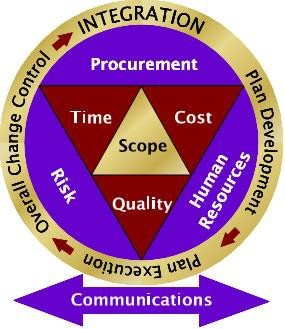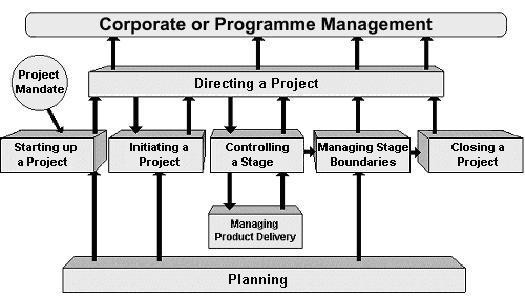Business Improvement projects can be, by their very nature, interesting projects to run as they do not always seem to follow a traditional Project Management Models (PMM). Currently there are a number of different Project Management Models available and widely used to manage projects. With a bit of knowledge about how the PMM works, the advantages and disadvantages of the different models, you can use them to provide the structure and governance required to execute a successful Business Improvement project.
The two most common Project Management Model’s (PMM’s) are PRINCE2 (Projects IN Controlled Environments) and PMBOK (Project Management Body Of Knowledge). There are also a number of in- house models that have been developed to address specific requirements within that organisation. Often, regardless of which model is used there are numerous benefits of adopting a companywide Project Management Model and using this model to execute your Business Improvement projects.
Advantages of the adoption of the regulated Project Management Models are:
- If a company does not have an established PMM, the adoption and implementation of a regulated model enables them to very quickly build up a level of operational best practice due to the information and combined experience within PMBOK and PRINCE2
- It creates an understanding within an organization of what is expected of a project team; It can give a company a competitive advantage;
- Users can gain recognized ‘qualifications’ in the model; Training is easily managed;
- It creates a community which in turn gives employees opportunity to share best practice.
Below we outline some of the advantages and disadvantages of the two big PMM’s and the establishment of an in-house model that was undertaken by a large Australian organization.
PMBOK and PRINCE2
PMBOK and PRINCE2 are two different approaches to Project Management that are widely used. Both of these PMM’s very definitely complement each other. Both approaches have advantages and disadvantages but the identification of the advantages and disadvantages of each approach is dependent on the environmental context being used to compare the two.
What is PMBOK?
 PMBOK is a collection of best practice principles that incorporates the different knowledge areas and process groups within a project. The PMBOK describes what a Project Manager should know to successfully execute a project.
PMBOK is a collection of best practice principles that incorporates the different knowledge areas and process groups within a project. The PMBOK describes what a Project Manager should know to successfully execute a project.
PMBOK has 39 processes grouped in 9 knowledge areas or 5 process groups.
Advantages:
- Comprehensive approach;
- Well suited to an iterative development environment; Includes Project Procurement Management; Customer Requirements driven;
Disadvantages:
- Project Governance is around the use of a Project Sponsor and stakeholders; Descriptive approach;
- Looks at a project as a single entity;
What is PRINCE2 ?
PRINCE2 is a structured, process based on a series of components and techniques. PRINCE2 describes what a project manager should do to successfully execute a project by supplying a road map that advises how a Project Manager should organise, manage and control their projects. The primary focus of PRINCE2 is the Business Case.
PRINCE 2 has 44 processes in the eight process groups and the interactions between the process groups are shown below.

Advantages:
- Business case driven; Process based methodology;
- Clear quality management points within the process; Change control process;
- Project governance is around the appointment of Project Board (PB). This has its own set of advantages:
- Increases the Business buy in as they are consulted via the PB throughout the lifecycle of the project;
- The PB has members that have the ability to assure resources;
- Decisions are made by the Business that effect the business;
- Focuses on key risk areas within a project environment;
- PRINCE2 can be integrated with a number of other models:
- OGC Gateway Process
- Managing Successful Programs (MSP)
- CMMI
- ITIL
Disadvantages:
- There is a requirement to produce numerous products (documents) throughout the project lifecycle;
- Decisions are made by the PM. This can lead to ‘paralysis by analysis’;
- Does not include all of the knowledge areas and detail found in the PMBOK (Procurement and HR);
- Not as suitable to an iterative development approach;
PRINCE2 vs PMBOK - retaining the benefits of each and correcting for the deficiencies
Both approaches are global and have hundreds of thousands of certified members. It is generally accepted by most Project Management Professionals that PRINCE2 and PMBOK are complementary and that a competent Project Manager should have knowledge of both.
The approach that is being adopted by many Australian businesses is to establish an internal model that is principally based on one PMM with some additional process that incorporates the aspects of the other PMM’s available.
A large Australian organization was presented with the challenge of modelling a best fit Project Management approach to deal with the large variety of projects undertaken within the organization. The type of projects undertaken by this organization include anything from Process Improvement to IT system upgrades to major infrastructure projects. Described below is the analysis that went behind the design of the internal project management model.
The directive was that the organization required a comprehensive Project Management model to:
- Address the needs of the project, and also the organization;
- Ensure that the risk of failure is managed, the method must provide the correct level of control and reporting;
- Provide the correct level of management information so that the appropriate decisions can be made;
A bespoke project approach was designed after a survey of the business was conducted. Through the receipt of the surveys the team identified a number of both positive and negative project management characteristics visible at that time throughout the organization.
With the design of the new methodology the team analyzed both PRINCE2 and PMBOK for the strengths of each approach. They mapped the strengths of the different models to the issues identified by the business. They then incorporated all of these different strengths to a methodology that was designed to:
- Reduce the risk of project failure; Focus on the needs of the business;
- Ensure the correct involvement of the correct teams at the right time; Provide a consistent way to plan and manage projects;
- Provide reporting visibility via effective controls;
- Ensure appropriate accountability and authority over projects;
The result of this exercise was a series of project based activities that were tailored specifically to meet the needs and environment of this particular organization.
Based on the experience of the team and the following analysis, the initial decision was made to customize the PRINCE2 method of Project Management. As both the PMO and the organization have matured, the method has been further customized to incorporate elements of PMBOK in order to utilize the advantages provided by both models.
The in-house model identified that:
- Even for a small project, no steps should be skipped; however the formality with which they are performed may vary greatly from small, medium and large projects.
- The same applies to the manner in which Project Management products are documented – a single page may be sufficient for a certain document in small projects, but larger projects would likely require more detail.
- The method itself also has to encourage feedback and continuous improvement.
In addition to this the organization has also incorporated the OGC Gateway model into their in-house model. The main driver for this inclusion was in order to further impress the requirements for good process governance and control and to provide on-going feedback to sponsors and stakeholders on project ‘health’.
Conclusion
Ultimately it doesn’t matter what Project Management Model you use, just as long as you use one. There a numerous advantages and disadvantages of the two principal PMM’s, but with a firm understanding of what your organization requires from a PMM you can either, adopt and implement a regulated Project Management Model or if you have some time you can successfully cherry pick from both PRINCE2 and PMBOK to create a in-house model that works for your organization.




